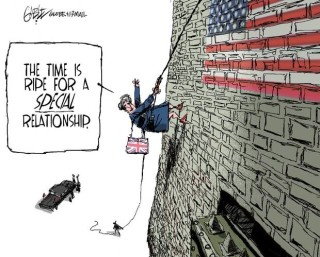NOTE: These activities are best done by parents with their elementary to high school aged children.
There is no background article in this study plan, but you can introduce them to the topic: It’s a big world. Rationale: As most of us are confined to our homes, our world can become quite small, so it can be refreshing to learn more about just how big the world is.
Read with them:
- Recently, when the American president was providing an update on the current situation, he commented that the virus had spread to 153 countries, and added that some people were surprised that there are that many countries in the world.
- Discuss: Are you surprised at how high or low this is? How many countries do you think there are in the world? Don’t check yet, for now, just guess. Hint: (153 is not the total number of countries in the world). If you have travelled to other countries with your child(ren)/student(s), list them and talk about them. What is remembered most?
Set up the activities:
Today, we’re going to explore the world for an hour or so using Wikipedia, Google Earth, and our imaginations. Here’s some of what we hope to learn:
- The number of countries in the world as of 2020;
- The largest countries by population, and by geography;
- What some countries we’ve never heard of look like, from above;
- The countries that are closest to Canada, by geographical size and by population;
- The size of religious populations in different countries;
- The average age of various populations;
- The countries with the largest and smallest urban populations;
First, we need to be clear about some terms we’re going to encounter. Let’s look these up:
- Dependent territories
- Continents
- Sovereign states
- Entities
- Rural, urban
Let’s start by making our own personal lists, in which we guess the answers to the questions below. Even if you have no idea, take a wild guess. Here’s one statistic that you’ll need: world population, averaged to fit most of the information you’ll find (some is from 2020, some from 2017) is about 7.7 billion—that is the same as the population of more than 200 Canadas.
If you have time, make a list of as many countries as you can name. Since you will likely know more than your child/student, stop writing when they’ve finished their list(s).
Next, guess your answers for these:
- Number countries there are in the world, within ten______
- Largest by geography_______ by population____
- Canada’s current population (there’s a hint above—use a calculator)_____
- Guess the smallest country by geography_______ by population_________
- Which has more countries in it, Africa or Asia?__________
- Name a country that is an island____________________
- How many oceans touch Canada?____________Names?___________
Next, start searching for the answers. This Wikipedia site contains a number of ways of accessing the information you’ll need. Use any searches you like for some of the other questions.
Now that you have navigated the site, explore some other facts, such as:
- Lists of countries by religions. For example, which has the most followers, Islam or Christianity? What is the Jewish population of the world? What is the Christian population of Canada? Muslim?
- In which countries can you expect to live the longest? Shortest?
- Which country has the youngest average population? Oldest?
Finally, as you cruise through the list of all these countries, note several that you, your child(ren) or student(s), had never heard of. Do some minimal research, and then use Google Earth to fly over them, to see what they look like. Use “Street View” to see what the countryside and city streets look like.
Have fun!

